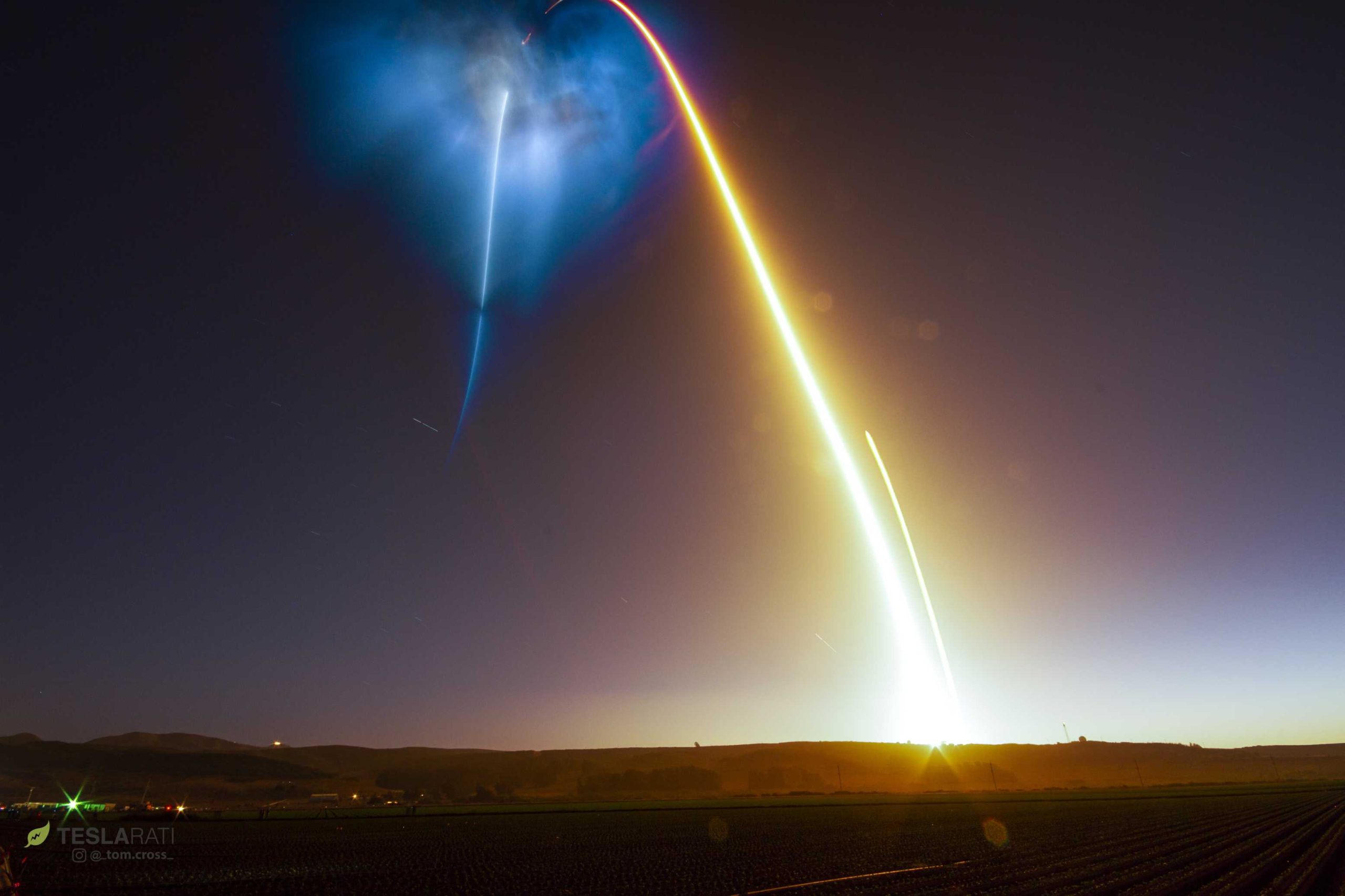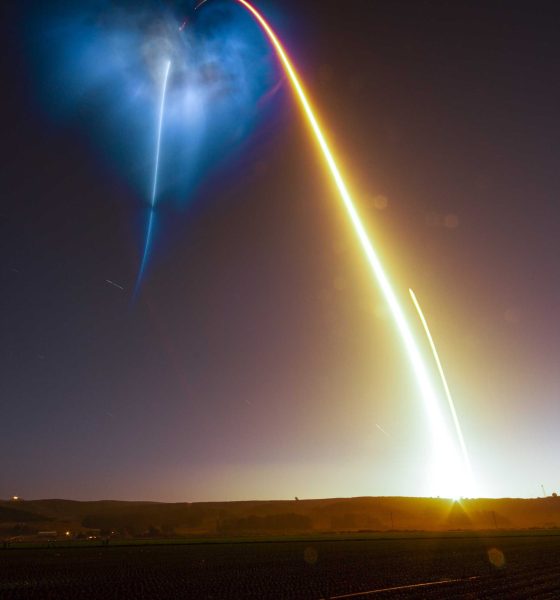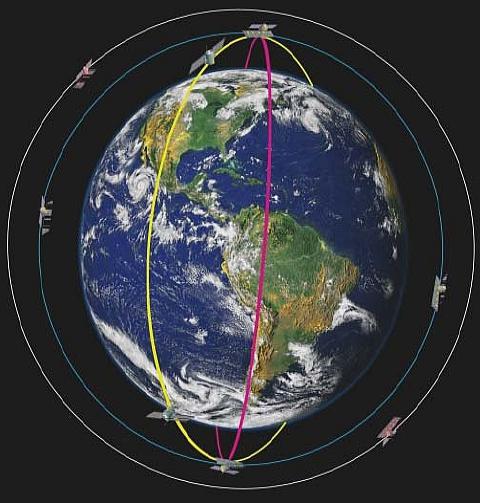

News
SpaceX’s first West Coast Falcon 9 launch in eight months now set for early 2020
After what is set to be a more than 8-month lull, SpaceX’s California launch facilities are scheduled to support a Falcon 9 launch no earlier than February 2020.
Speaking at 2019’s World Satellite Business Week, Raúl Kulichevsky – a director at the Comisión Nacional de Actividades Espaciales (CONAE), Argentina’s national space agency – confirmed that the country’s SAOCOM-1B Earth observation satellite making great progress towards that launch target.
The launch was recently pushed into January and later March of 2020 after minor satellite production delays ended plans for a late-2019 launch. On a recent positive note, Deputy Executive and Technical Director of CONAE Raúl Kulichevsky indicated that SAOCOM-1B’s Falcon 9 launch was now planned a month or so earlier than previously expected and is on track for a February 2020 liftoff from Vandenberg Air Force Base (VAFB).
This small but positive schedule bump comes just a week or so after CONAE engineers and technicians wrapped up a major SAOCOM-1B integration milestone, successfully attaching the satellite’s main imaging instrument – a large phased-array radar – to its bus (the primary structure). This work is ongoing in Bariloche, Argentina, a spectacular town surrounded by the Andes mountain range and glacier-fed lakes. Aside from the electrical and mechanical integration of SAOCOM-1B’s radar and bus, the CONAE team completed the installation of thermal insulator blankets. Up next will be the attachment of two solar arrays and associated deployment tests, followed by integrated center-of-gravity measurements and vibrational/acoustic load tests.
Assuming a successful launch early next year, SAOCOM-1B will join its SAOCOM-1A sister satellite in a sun-synchronous orbit (SSO), completing the L-band Satélite Argentino de Observación Con Microondas Synthetic Aperture Radar (SAR) constellation. In an agreement called Sistema Italo Argentino de Satélites para la Gestión de Emergencias (SIASGE), the completed SAOCOM constellation will work in conjunction with Italy’s four-satellite COSMO-SkyMed constellation to provide accurate and persistent Earth observations and support disaster monitoring efforts around the world.
CONAE hopes to eventually expand its SAOCOM constellation with the future development and deployment of two SAOCOM-2 spacecraft.

The SAOCOM-1A satellite was launched in a spectacular fashion in October 2018, producing a nebula-like cloud of sun-lit Falcon 9 exhaust that was visible for hundreds of miles. The SAOCOM-1A marked the second launch of Falcon 9 booster B1048 and also featured SpaceX’s first successful West Coast Return-to-Launch-Site (RTLS) landing.
Highly Commended for Skyscapes is Brandon Yoshizawa’s ‘Flower Power’ #astrophoto2019 pic.twitter.com/L5EVGwEfDr— Royal Museums Greenwich (@RMGreenwich) September 12, 2019
Falcon 9’s SAOCOM-1B mission will come long after SpaceX’s most recent West Coast launch – the June 2019 launch of the Canadian Space Agency’s (CSA) RADARSAT Constellation Mission (RCM). West coast observers and launch teams are sure to welcome the launch of the SAOCOM-1B mission after what is set to be more than eight months spent without a launch.
Check out Teslarati’s newsletters for prompt updates, on-the-ground perspectives, and unique glimpses of SpaceX’s rocket launch and recovery processes.

News
Tesla (TSLA) receives “Buy” rating and $551 PT from Canaccord Genuity
He also maintained a “Buy” rating for TSLA stock over the company’s improving long-term outlook, which is driven by autonomy and robotics.

Canaccord Genuity analyst George Gianarikas raised his Tesla (NASDAQ:TSLA) price target from $482 to $551. He also maintained a “Buy” rating for TSLA stock over the company’s improving long-term outlook, which is driven by autonomy and robotics.
The analyst’s updated note
Gianarikas lowered his 4Q25 delivery estimates but pointed to several positive factors in the Tesla story. He noted that EV adoption in emerging markets is gaining pace, and progress in FSD and the Robotaxi rollout in 2026 represent major upside drivers. Further progress in the Optimus program next year could also add more momentum for the electric vehicle maker.
“Overall, yes, 4Q25 delivery expectations are being revised lower. However, the reset in the US EV market is laying the groundwork for a more durable and attractive long-term demand environment.
“At the same time, EV penetration in emerging markets is accelerating, reinforcing Tesla’s potential multi‑year growth runway beyond the US. Global progress in FSD and the anticipated rollout of a larger robotaxi fleet in 2026 are increasingly important components of the Tesla equity story and could provide sentiment tailwinds,” the analyst wrote.
Tesla’s busy 2026
The upcoming year would be a busy one for Tesla, considering the company’s plans and targets. The autonomous two-seat Cybercab has been confirmed to start production sometime in Q2 2026, as per Elon Musk during the 2025 Annual Shareholder Meeting.
Apart from this, Tesla is also expected to unveil the next-generation Roadster on April 1, 2026. Tesla is also expected to start high-volume production of the Tesla Semi in Nevada next year.
Apart from vehicle launches, Tesla has expressed its intentions to significantly ramp the rollout of FSD to several regions worldwide, such as Europe. Plans are also underway to launch more Robotaxi networks in several more key areas across the United States.
News
Waymo sues Santa Monica over order to halt overnight charging sessions
In its complaint, Waymo argued that its self-driving cars’ operations do not constitute a public nuisance, and compliance with the city’s order would cause the company irreparable harm.

Waymo has filed a lawsuit against the City of Santa Monica in Los Angeles County Superior Court, seeking to block an order that requires the company to cease overnight charging at two facilities.
In its complaint, Waymo argued that its self-driving cars’ operations do not constitute a public nuisance, and compliance with the city’s order would cause the company irreparable harm.
Nuisance claims
As noted in a report from the Los Angeles Times, Waymo’s two charging sites at Euclid Street and Broadway have operated for about a year, supporting the company’s growing fleet with round-the-clock activity. Unfortunately, this has also resulted in residents in the area reportedly being unable to sleep due to incessant beeping from self-driving taxis that are moving in and out of the charging stations around the clock.
Frustrated residents have protested against the Waymos by blocking the vehicles’ paths, placing cones, and “stacking” cars to create backups. This has also resulted in multiple calls to the police.
Last month, the city issued an order to Waymo and its charging partner, Voltera, to cease overnight operations at the charging locations, stating that the self-driving vehicles’ activities at night were a public nuisance. A December 15 meeting yielded no agreement on mitigations like software rerouting. Waymo proposed changes, but the city reportedly insisted that nothing would satisfy the irate residents.
“We are disappointed that the City has chosen an adversarial path over a collaborative one. The City’s position has been to insist that no actions taken or proposed by Waymo would satisfy the complaining neighbors and therefore must be deemed insufficient,” a Waymo spokesperson stated.
Waymo pushes back
In its legal complaint, Waymo stated that its “activities at the Broadway Facilities do not constitute a public nuisance.” The company also noted that it “faces imminent and irreparable harm to its operations, employees, and customers” from the city’s order. The suit also stated that the city was fully aware that the Voltera charging sites would be operating around the clock to support Waymo’s self-driving taxis.
The company highlighted over one million trips in Santa Monica since launch, with more than 50,000 rides starting or ending there in November alone. Waymo also criticized the city for adopting a contentious strategy against businesses.
“The City of Santa Monica’s recent actions are inconsistent with its stated goal of attracting investment. At a time when the City faces a serious fiscal crisis, officials are choosing to obstruct properly permitted investment rather than fostering a ‘ready for business’ environment,” Waymo stated.
News
Tesla FSD v14.2.2 is getting rave reviews from drivers
So far, early testers have reported buttery-smooth drives with confident performance, even at night or on twisty roads.

Tesla Full Self-Driving (Supervised) v14.2.2 is receiving positive reviews from owners, with several drivers praising the build’s lack of hesitation during lane changes and its smoother decision-making, among others.
The update, which started rolling out on Monday, also adds features like dynamic arrival pin adjustment. So far, early testers have reported buttery-smooth drives with confident performance, even at night or on twisty roads.
Owners highlight major improvements
Longtime Tesla owner and FSD user @BLKMDL3 shared a detailed 10-hour impression of FSD v14.2.2, noting that the system exhibited “zero lane change hesitation” and “extremely refined” lane choices. He praised Mad Max mode’s performance, stellar parking in locations including ticket dispensers, and impressive canyon runs even in dark conditions.
Fellow FSD user Dan Burkland reported an hour of FSD v14.2.2’s nighttime driving with “zero hesitations” and “buttery smooth” confidence reminiscent of Robotaxi rides in areas such as Austin, Texas. Veteran FSD user Whole Mars Catalog also demonstrated voice navigation via Grok, while Tesla owner Devin Olsen completed a nearly two-hour drive with FSD v14.2.2 in heavy traffic and rain with strong performance.
Closer to unsupervised
FSD has been receiving rave reviews, even from Tesla’s competitors. Xpeng CEO He Xiaopeng, for one, offered fresh praise for FSD v14.2 after visiting Silicon Valley. Following extended test drives of Tesla vehicles running the latest FSD software, He stated that the system has made major strides, reinforcing his view that Tesla’s approach to autonomy is indeed the proper path towards autonomy.
According to He, Tesla’s FSD has evolved from a smooth Level 2 advanced driver assistance system into what he described as a “near-Level 4” experience in terms of capabilities. While acknowledging that areas of improvement are still present, the Xpeng CEO stated that FSD’s current iteration significantly surpasses last year’s capabilities. He also reiterated his belief that Tesla’s strategy of using the same autonomous software and hardware architecture across private vehicles and robotaxis is the right long-term approach, as it would allow users to bypass intermediate autonomy stages and move closer to Level 4 functionality.








